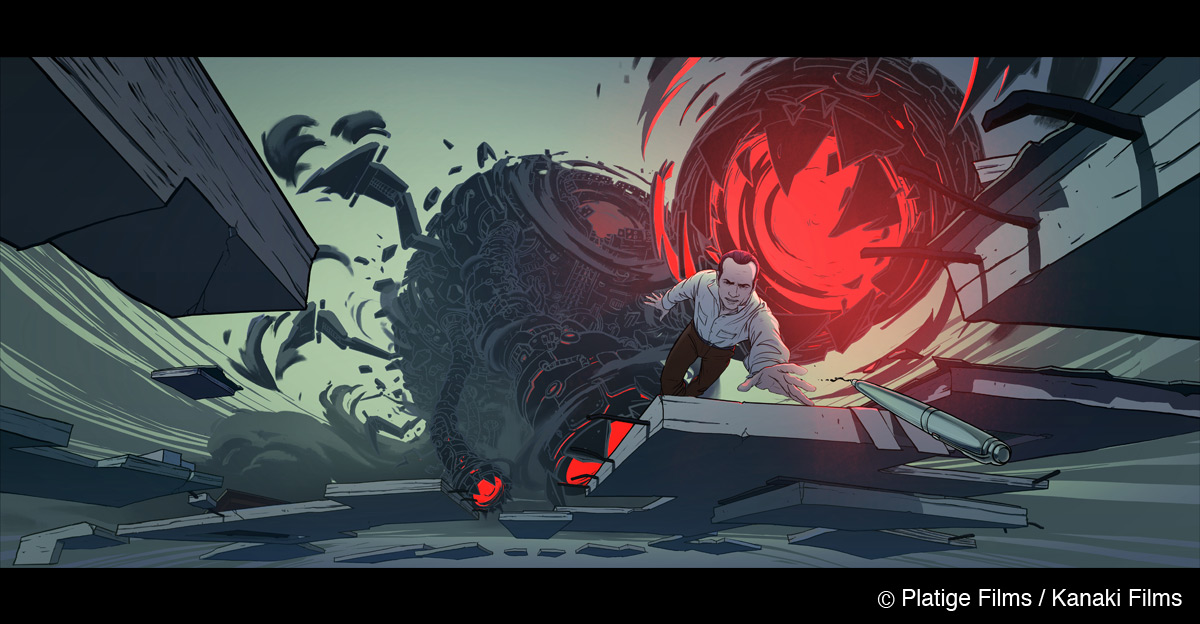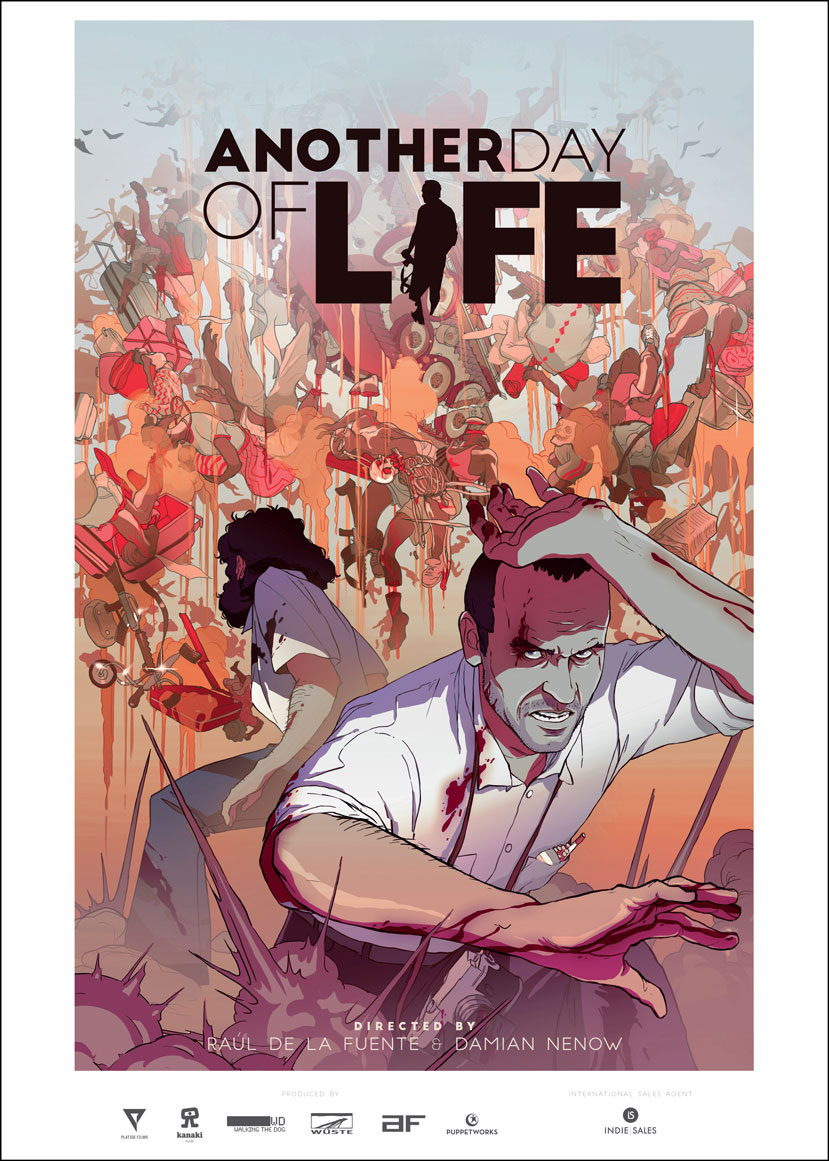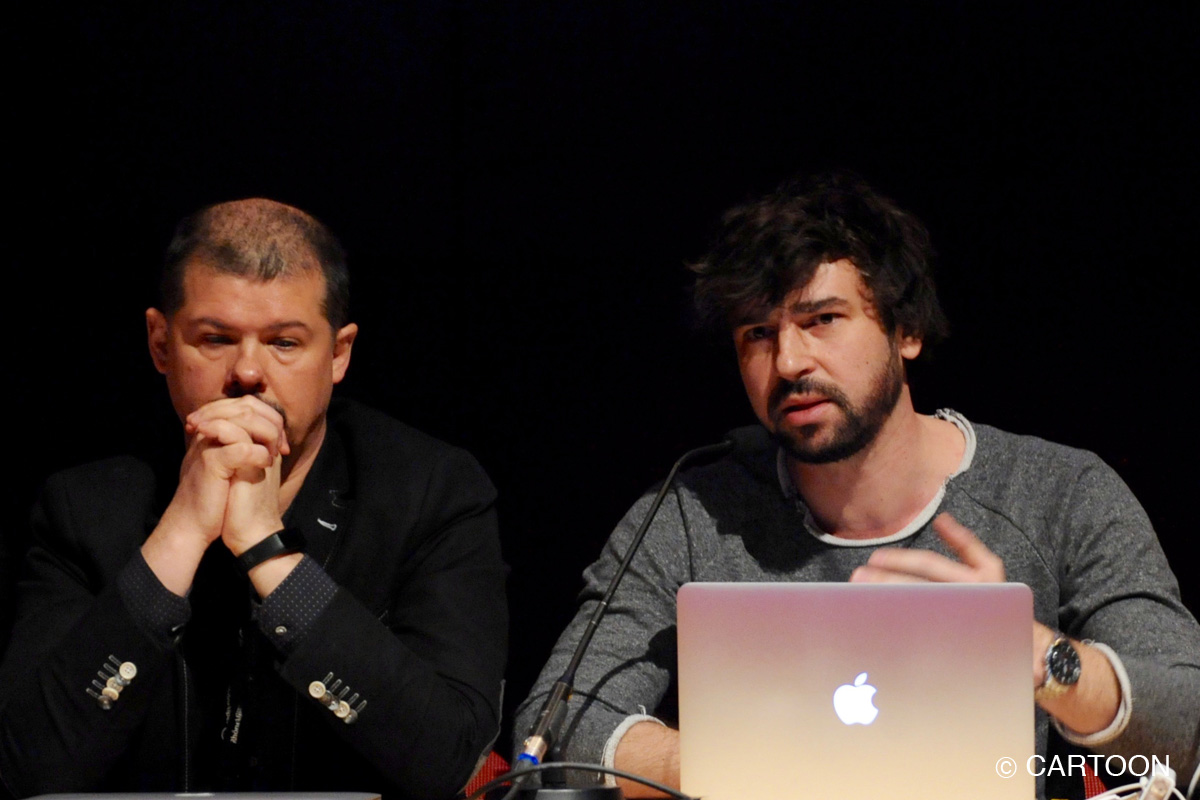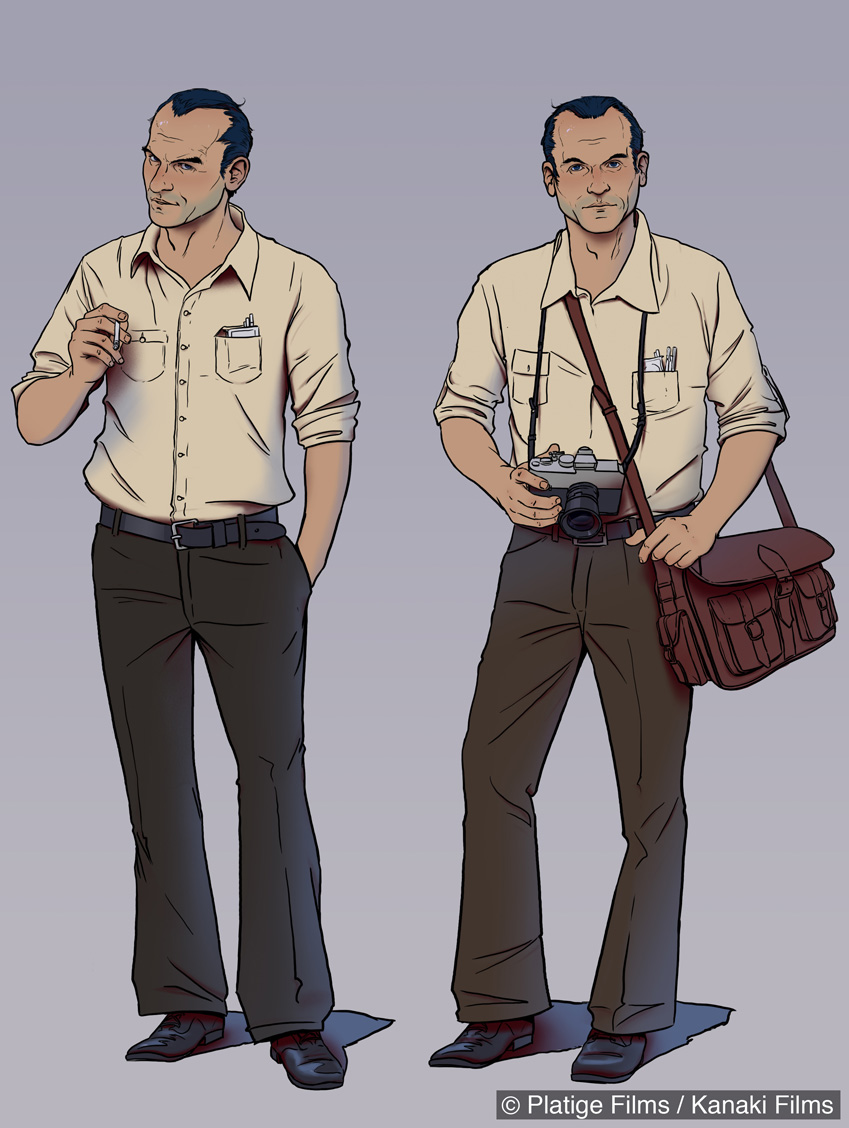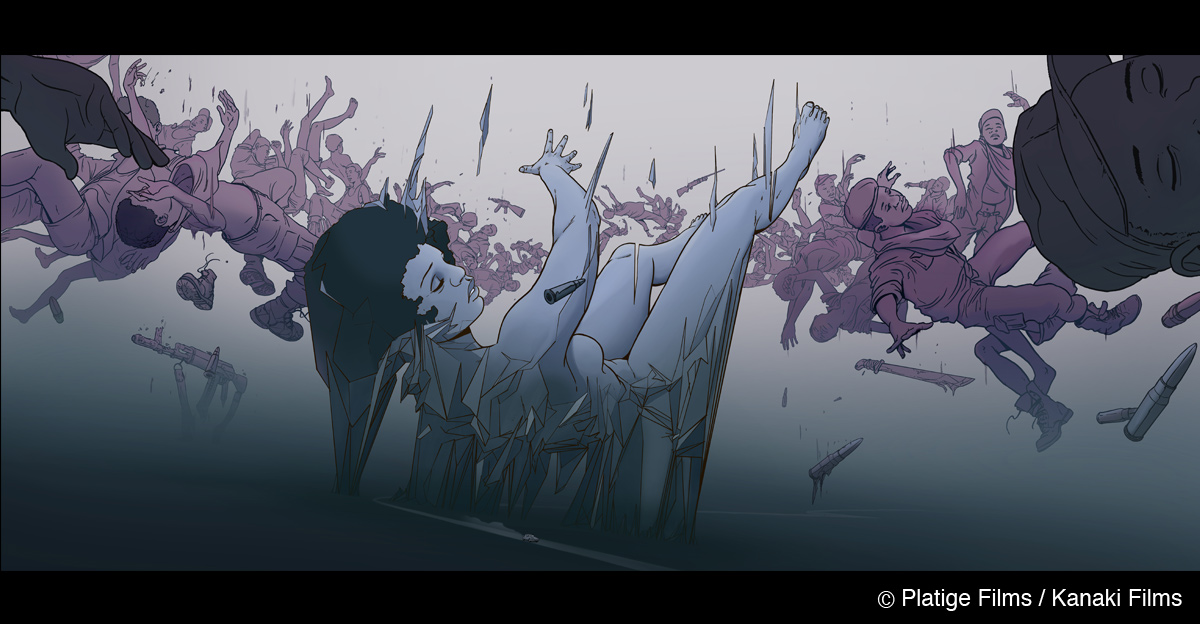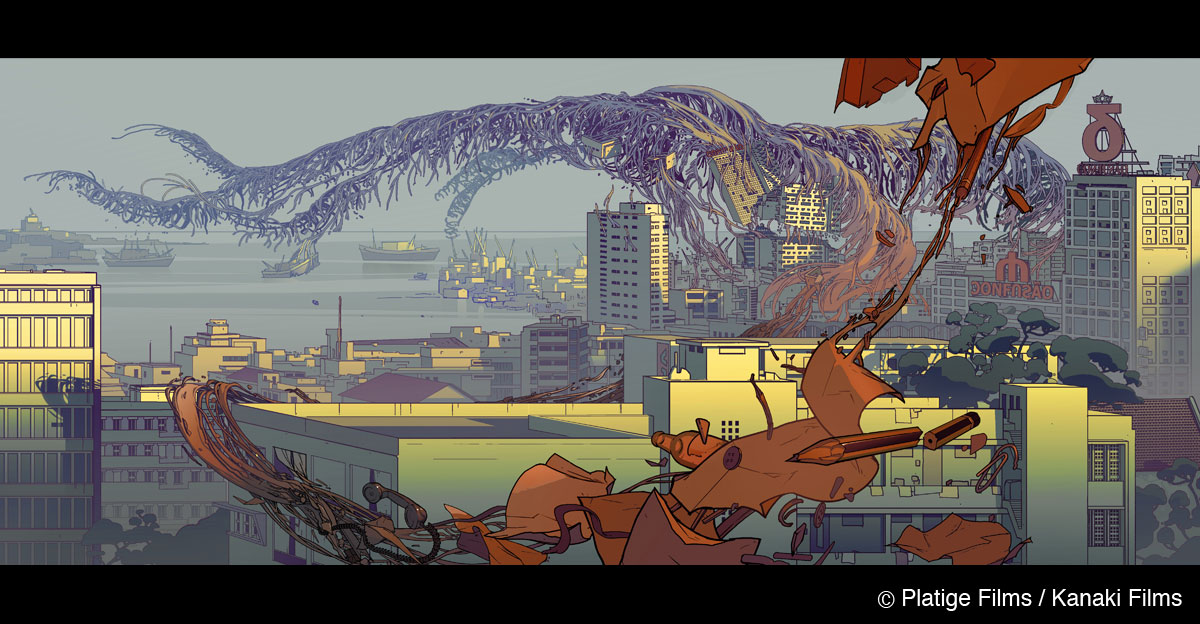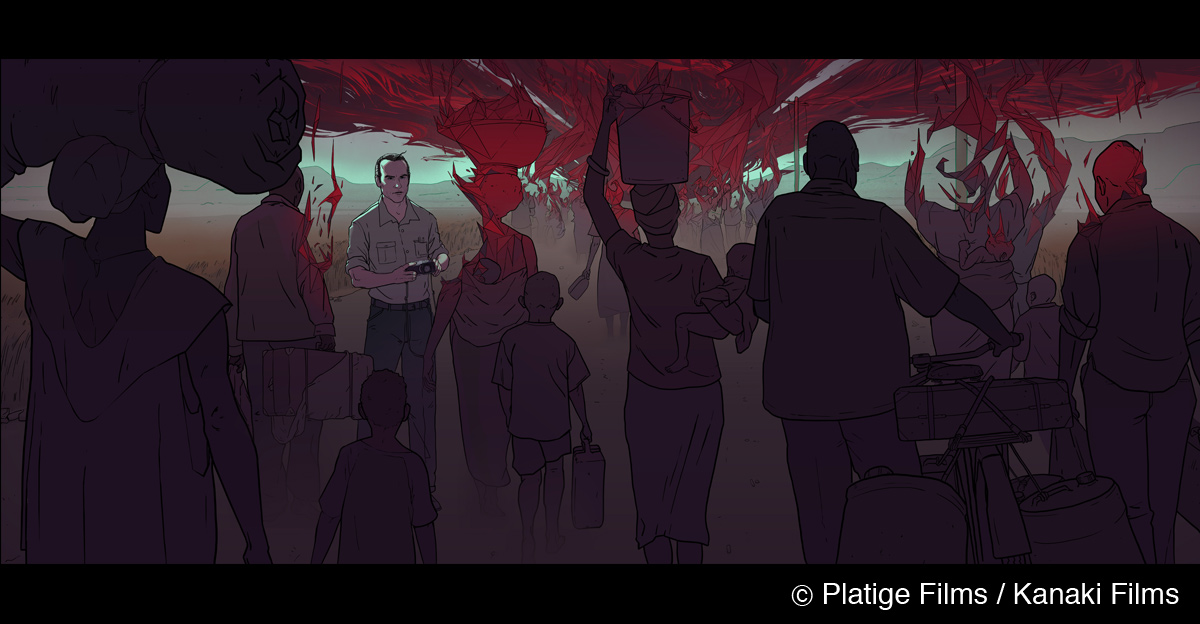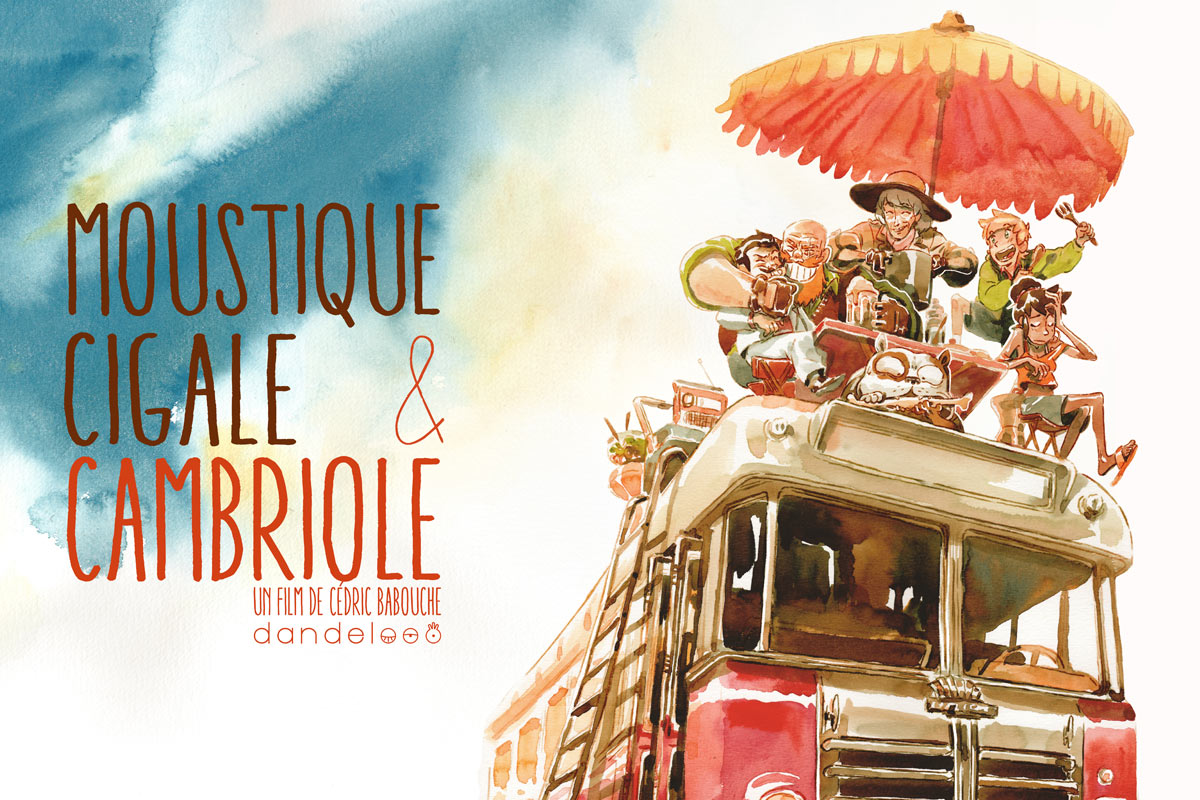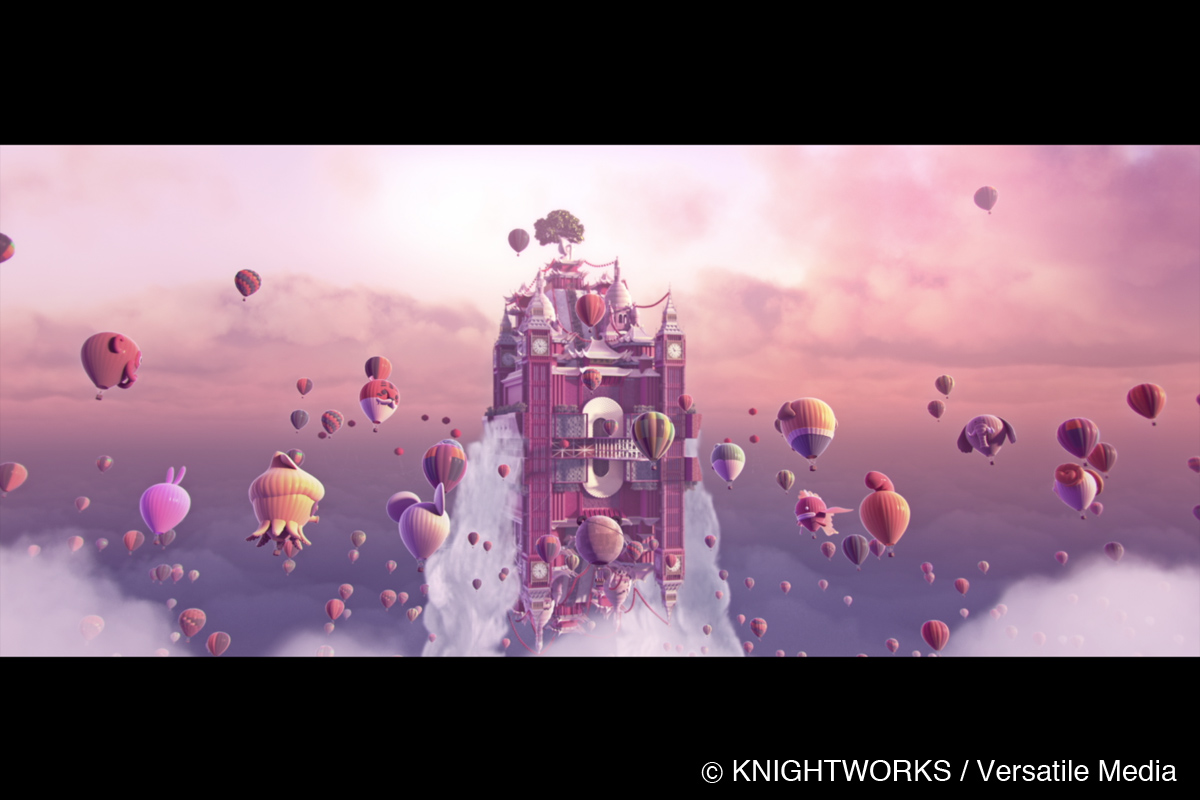Another Day of Life
(Status: in production)
Synopsis
Another Day of Life is a story of a reporter seeking the truth about war who, during a mortally dangerous journey through Angola, encounters situations and events forcing him to change his attitude to work and life. The film’s action takes place during the three months Kapuściński spent in this war-torn country in 1975. During the expedition, the reporter realizes that he is a witness to the events, the meaning of which requires him to go beyond the role of an observer. To recount the story of Angola, he will have to undergo a deep transformation himself. Another Day of Life (Jeszcze dzień życia), the book in which Kapuściński writes about his experience in Angola, bears witness to his rebirth both as a writer and as a human being.
Director: Raúl de la Fuente, Damian Nenow
Producer: Platige Films (Poland), Kanaki Films (Spain)
Co-Producer: Wüste Film (Germany), Walking The Dog (Belgium), Animationsfabrik (Germany), Puppetworks Studios (Hungary)
Production companies: Platige Films (Poland), Kanaki Films (Spain)
Target audience: Young adults / adults
Technique: 3D digital
Ryszard Kapuściński (1932-2007) was the Polish journalist who was recognized as the most perceptive journalist and writer of his time. His work was best known for literary reportage. During his lifetime, he became the sole foreign journalist who went through the chaotic summer of 1975 in Luanda, the capital of Angola, regaining its independence after the collapse of the Portuguese regime in 1974. He recorded his experience of driving for three months past the thousands of checkpoints and impressions of young soldiers from Cuba, Angola, South Africa, and Portugal. He published it in his best known book Another Day of Life (1976).
Kapuściński’s Another Day of Life is now about to be given new life as a stylized animation with fragments of documentary photographs. Six European studios got together to challenge this ambitious yet innovative project led by Raúl de la Fuente and Damian Nenow, the directors of the film. They follow the journey of Kapuściński but not by just illustrating the stories written in the book. They invent stories to get deeper down in Kapuściński’s personal transformation. It consists of 60 minutes of animated action and 20 minutes of live-action documentary. It embraces the power of animation which gives the audiences a strong emotional impact and immerses them in the world witnessed by Kapuściński.
We talked to Damian Nenow, the director of the film, via an email interview. He shares his creative insights and how they carefully planned and designed the full film in production.
Interview with Damian Nenow
Story development
Animationweek (AW): What drew you to the story of the book by Ryszard Kapuściński and why did you decide to make a film based on that book?
Damian Nenow: We’ve never wanted to illustrate the book. What we wanted was to make a film about Kapuściński’s maturation that led to his first one! We consider Another Day of Life to be really special. It is, in fact, his first purebred book. We’ve found a great story there: poetry, creation –Kapuściński’s trademark, but most of all – transformation. A reporter becomes a writer. The birth of an artist in Angola in 1975. What changed him? Who was he and who did he become afterwards? This is what intrigued us so much. In this story of Kapuściński’s transformation, we saw a great opportunity to tell something much more current about the condition of our world, now, today.
AW: Did you have the characters and plot in your mind when you decided to adapt the book or was it a collaborative effort to create the story and characters?
Damian Nenow: We are not illustrating the book. In our story we focus on Kapuściński’s journey in Angola in 1975. A journey that eventually results in the book being written. We meet the people Kapuściński described in his book. We meet some of them for real – in live action, and some are fictional… Story plots are inspired by the book and actual events, but have been invented. All this put together builds our new story. At the beginning we had a basic concept what story we would like to tell in this film. However, all the plots and characters were designed over the years we spent on script writing. We redesigned lots of the story elements during weeks of rehearsal sessions with actors and many pre-editing stages that were completed right after that.
Hybrid format
AW: Why did you decide to mix live action and animation for Another Day of Life?
Damian Nenow: A hybrid format has been the very foundation of the concept since the beginning – when we met with Raul six years ago. I loved his immersive documentary, he loved my surreal and comic-book style animation. And we both love Kapuściński’s writing style. He was using poetry and fictional elements to present facts. We wanted to use a similar approach in our film. The hybrid format with 60 minutes of animation and 20 minutes of live-action seemed tailor-made for this. It’s a mixture of pure creation – animation, and live-action. It’s like a puzzle, a patchwork. One layer complements the other. Both layers serve the same consistent story. Sometimes, they seem to have different themes, but there’s always a common denominator, stimulating the audience’s imagination, telling the big story.
AW: How did you come up with the initial idea of visuals and developed it further?
Damian Nenow: We wanted to make an epic and surreal animated film. We had a ready-to-use pipeline for 3D CGI animation that seemed to be tailor-made for this. However, we also wanted the film to have an actors’ quality in it. Not just illustrations, but real dialogues with a true actors’ performance and experience in animated film – this was a challenge. I set two major goals: it must have NATURAL motion and camera animation that will appeal to audiences who are not fans of animation, and have an absolute ZERO uncanny-valley effect.
So we stylized our film. A comic-book illustration style. This look is not new, but we focused on one important thing – no “realistic” CGI. No paper, no porcelain with whiteboard marker drawings on it. No plastic, no computer 3D video game. This is a trap everybody falls into, but we just can’t. Our outlines and drawings are not a POST-PROCESS effect. They are fully dynamic 3D objects, rigged into faces, following facial expressions, fully controlled by the animator. This, together with our shading technology, gives us something new and uncanny-valley free, yet with the full range of acting expressiveness. We have tested 3D CGI animation with comic-book stylization many times before. Everything started with my short film: “Paths of Hate”. Sometime later, I did a short spot for the UN – “Hunger is a Tyrant”. In Platige we did a few more projects with this stylization. All of them proved that these kind of visuals are a bull’s eye for serious themes – like a war story. The graphic style allows simplifications and, at the same time, provides an enormous arsenal of means of expression compared with realistic 3D animation. It fits within these 60 minutes of Another Day of Life perfectly.
Challenges
AW: What are/were some of the challenges you faced?
Damian Nenow: The whole project was a pioneer work for us, on both production and technological levels. We have simply never done anything of this scale before. Nobody around has ever done anything that was even close. A fully 3D CGI motion-capture based war film… There was no one to ask for advice… We had to break down every door with our own heads. The international nature of this project itself happened to be a big challenge. I have a great pleasure of working with the best of the best. A fantastic international team. However, it’s not easy to work with so many studios and geographically distant teams simultaneously. Creating a working pipeline that connects all the links into one chain… this took us some time.
How to get into the animation industry
AW: Could you please let us know some backstory of how and why you decided to get into the animation industry and tell stories through animation?
Damian Nenow: I have been drawing and painting since I was a small kid. I’ve graduated from the School of Fine Arts, got my first PC… and boom! It happened when I saw Tomek Bagiński’s 3D CGI films and ran to the Polish National Film School in Łódź, knowing that this was going to be my life – animated films. I fell in love with short films. Everybody can acquire a basic skillset in 3D CGI. This technology seems to be the most profitable – learning time versus the visual potential it gives. One artist can produce a 3 to 5 minute-long short without selling their house or their kidney during the holiday. And so did I. 4 short films. The fifth one was Paths of Hate. It started as a student project. The script and the first storyboards. However, this time I was really tempted to make it slightly bigger. So it ended up on a shelf and waited there for a year. I picked it up in Platige Image and finished it with friends.


